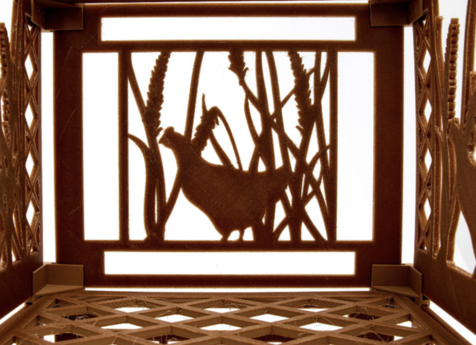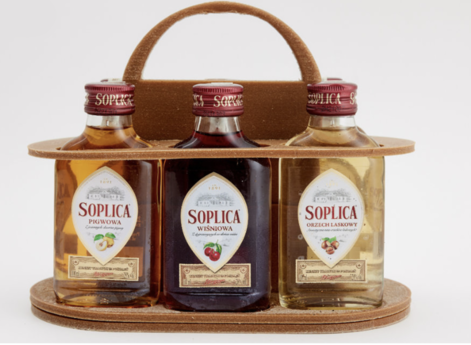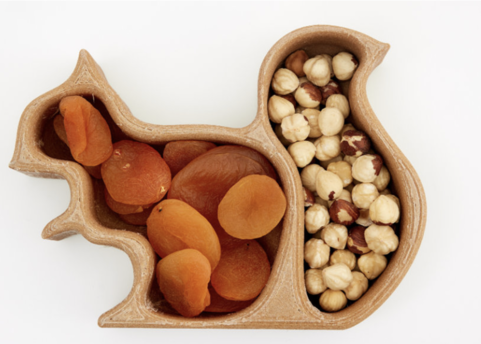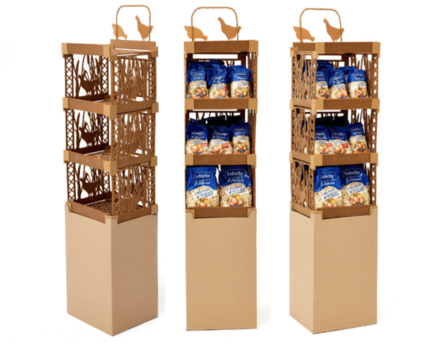
One of the simplest and most effective ways to lower our personal carbon footprint is by reusing the things which we use on a daily basis. If we give a closer look at the objects around us, we will find many of them are plastic products that degrade the environment. To reduce the amount of waste generated by furniture and home products, Polish-based Greenfill3D has taken the initiative to use wheat bran waste to 3D print storage compartments and advertising racks. This lowers the need for plastic-based items that often end up in landfills. The company believes that individuals can actually make a difference by using sustainable materials to design products to reduce personal greenhouse gas emissions. Take a look at these delightful 3D printed items made from recycled wheat bran waste:
Also Read: Architect Upcycles Textile Waste into Decorative Bricks | FabBRICK
 Greenfill3d is a Polish furniture company that creates 3D-printed everyday items from biodegradable or bio-compostable materials under zero-waste and circular economy principles.
Greenfill3d is a Polish furniture company that creates 3D-printed everyday items from biodegradable or bio-compostable materials under zero-waste and circular economy principles.

How The Firm Creates Green Home Goods
The home collection created by Greenfill3d is made of several components that the firm 3D Printed individually. For instance, the advertising stand designed by the company consists of 34 separate parts that are joined together for simple assembly.
 The studio uses one out of these three sustainable materials in all of its creations: BioWOOD (wood powdered material), GF3D Branfill3d (wheat bran material), and BioCREATE (compostable material). They are associated with Europe’s major food manufacturers to get the wheat bran waste from Pasta.
The studio uses one out of these three sustainable materials in all of its creations: BioWOOD (wood powdered material), GF3D Branfill3d (wheat bran material), and BioCREATE (compostable material). They are associated with Europe’s major food manufacturers to get the wheat bran waste from Pasta.
Also Read: Shell Waste is Used to Create an Eco-Friendly Alternative to Concrete | Sea Stone by Studio newtab-22
 From there, the solid waste is carefully measured for production before being combined with polylactic acid (PLA) to form a filament used in 3D printing. This mixture of wheat bran waste and PLA, called GF3D, is then passed into forty 3D printers to produce everyday used household products such as advertising racks and storage cabinets.
From there, the solid waste is carefully measured for production before being combined with polylactic acid (PLA) to form a filament used in 3D printing. This mixture of wheat bran waste and PLA, called GF3D, is then passed into forty 3D printers to produce everyday used household products such as advertising racks and storage cabinets.
Keep reading SURFACES REPORTER for more such articles and stories.
Join us in SOCIAL MEDIA to stay updated
SR FACEBOOK | SR LINKEDIN | SR INSTAGRAM | SR YOUTUBE
Further, Subscribe to our magazine | Sign Up for the FREE Surfaces Reporter Magazine Newsletter
Also, check out Surfaces Reporter’s encouraging, exciting and educational WEBINARS here.
You may also like to read about:
Innovative 3D Printer That Upcycles Sawdust and Other Wood Waste To Create Wonderful Products
Studio’s In-House Production Waste Converted into 3D Printed Ermis Chair | The New Raw
And more…